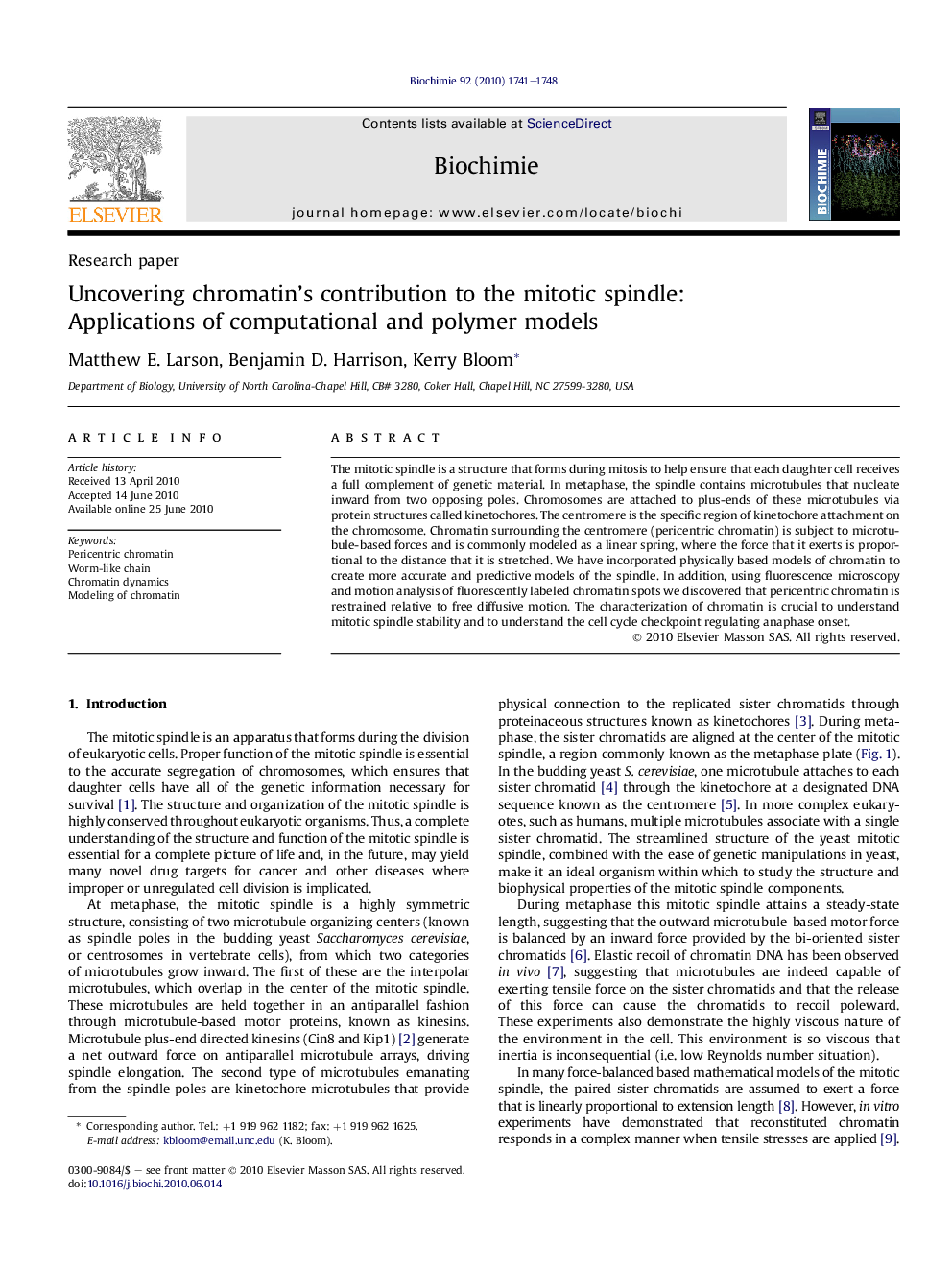| Article ID | Journal | Published Year | Pages | File Type |
|---|---|---|---|---|
| 1952444 | Biochimie | 2010 | 8 Pages |
Abstract
The mitotic spindle is a structure that forms during mitosis to help ensure that each daughter cell receives a full complement of genetic material. In metaphase, the spindle contains microtubules that nucleate inward from two opposing poles. Chromosomes are attached to plus-ends of these microtubules via protein structures called kinetochores. The centromere is the specific region of kinetochore attachment on the chromosome. Chromatin surrounding the centromere (pericentric chromatin) is subject to microtubule-based forces and is commonly modeled as a linear spring, where the force that it exerts is proportional to the distance that it is stretched. We have incorporated physically based models of chromatin to create more accurate and predictive models of the spindle. In addition, using fluorescence microscopy and motion analysis of fluorescently labeled chromatin spots we discovered that pericentric chromatin is restrained relative to free diffusive motion. The characterization of chromatin is crucial to understand mitotic spindle stability and to understand the cell cycle checkpoint regulating anaphase onset.
Keywords
Related Topics
Life Sciences
Biochemistry, Genetics and Molecular Biology
Biochemistry
Authors
Matthew E. Larson, Benjamin D. Harrison, Kerry Bloom,
